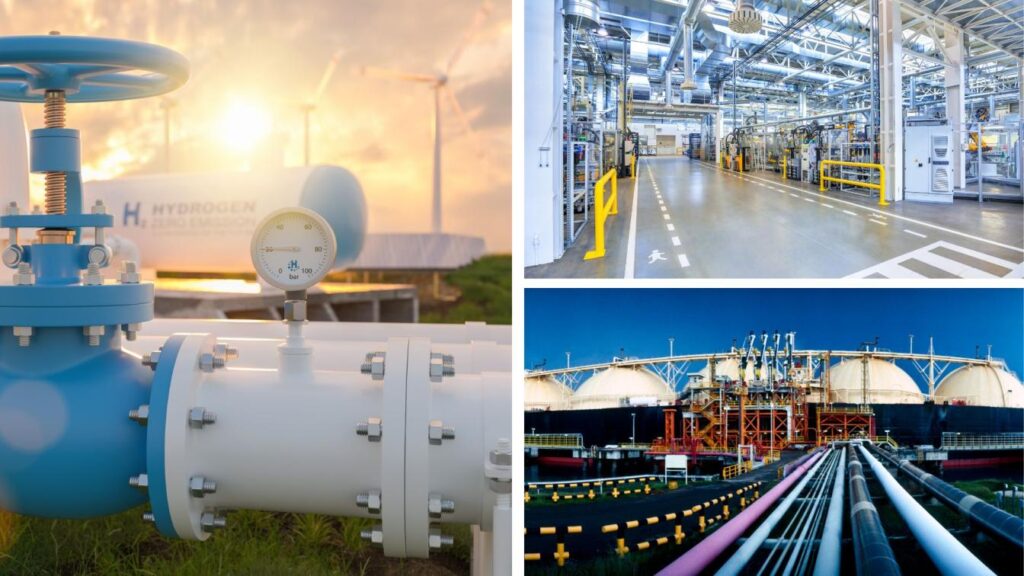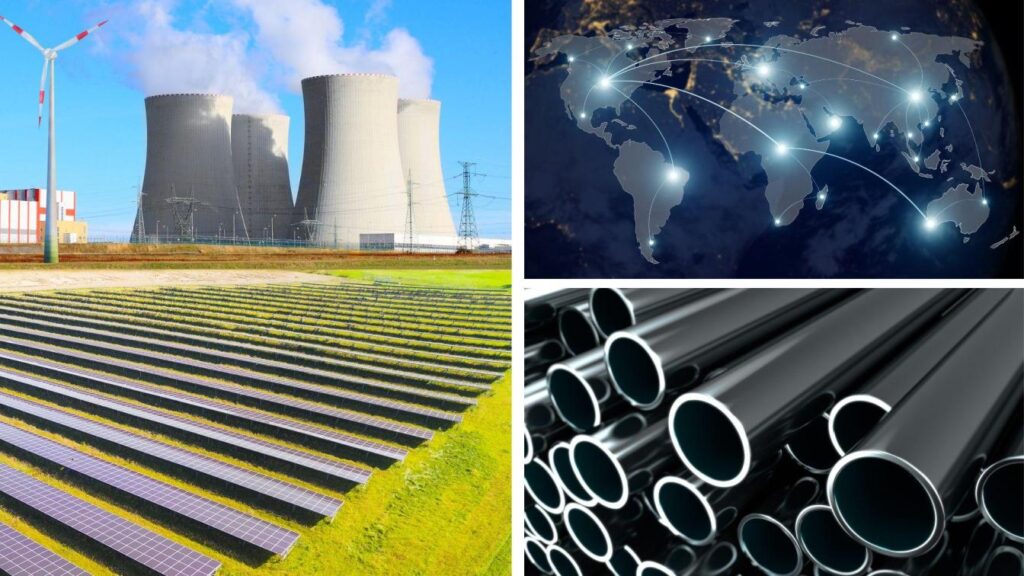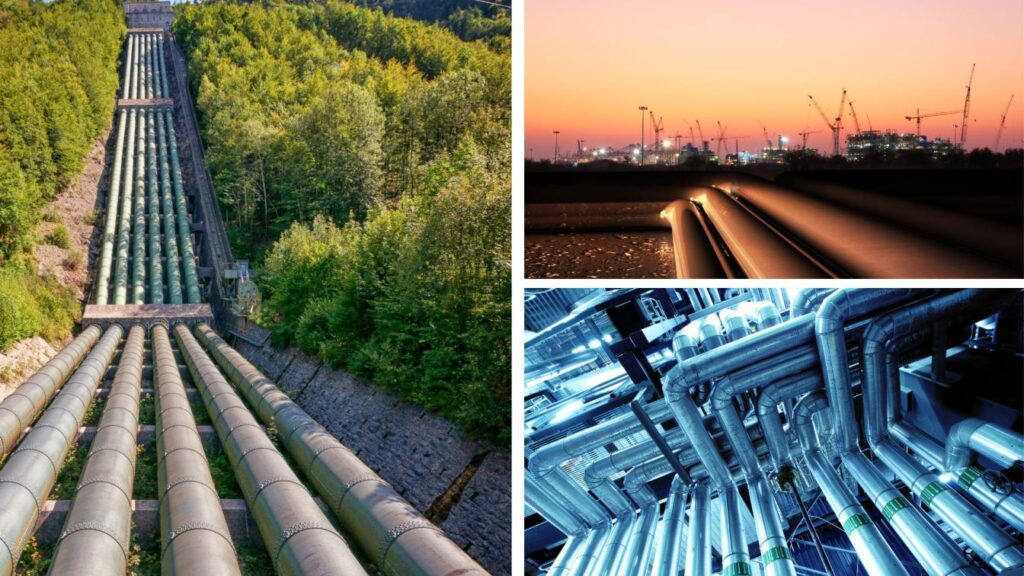
The global transition towards clean energy has accelerated in recent years, with hydrogen emerging as a key player in the decarbonization of various sectors. Singapore, a nation committed to sustainable development, has recognized the potential of hydrogen in its journey towards a low-carbon future. As part of its National Hydrogen Strategy, Singapore aims to develop a comprehensive hydrogen pipeline network to support the adoption of advanced hydrogen technologies and infrastructure. In this context, Nexa Pipe, with its innovative pipe and relining solutions, is well-positioned to play a crucial role in the development of Singapore’s hydrogen pipeline network.
Nexa Pipe’s Proprietary Flat Tube Technology
Nexa Pipe’s proprietary flat tube technology is a game-changer in the pipe manufacturing industry. This innovative two-stage production process involves the creation of a flat tube, followed by the formation of the composite pipe from the flat tube. The flat tube is produced at a dedicated factory using advanced composite materials, including:
- An inner polymer liner that provides a barrier against permeation and corrosion
- Fiberglass or carbon fiber for strength and durability
- An outer polymer layer that protects against impact, UV, fire, and other environmental damage
The flat tube is lightweight, flexible, strong, and can be easily transported and stored in coils. In the second stage, the flat tube is inflated to form a round pipe of the specified diameter, allowing for the production of continuous 500-750 meter pipe lengths either in a factory or directly in the field. This minimizes the number of joints required, enhancing the overall integrity of the pipeline system. Nexa Pipe’s composite material provides several key advantages over traditional steel pipes for hydrogen transportation:
- Higher pressure rating and thinner walls, increasing flow rate for the same outer diameter
- Resistance to corrosion and abrasion, extending the pipeline’s lifespan
- Lightweight and flexible, reducing transportation and installation costs
- Inner liner prevents hydrogen permeation and leakage
These unique characteristics make Nexa Pipe’s technology an ideal solution for Singapore’s hydrogen pipeline network, ensuring safe, efficient, and cost-effective hydrogen transportation.
Addressing the Challenges of Hydrogen Transportation
Hydrogen presents several challenges when it comes to pipeline transportation. Its small molecular size makes it prone to leakage, and its ability to embrittle certain metals can lead to pipeline integrity issues. Steel pipes, the most common material for gas pipelines, are particularly susceptible to hydrogen embrittlement, which can cause cracking, blistering, and reduced tensile strength. Nexa Pipe’s composite pipes offer a solution to these challenges. The inner polymer liner acts as an effective barrier against hydrogen permeation, preventing leakage and ensuring the safe containment of the gas. The composite materials used in Nexa Pipe’s products are not susceptible to hydrogen embrittlement, maintaining their structural integrity even under high-pressure hydrogen flow. This makes Nexa Pipe’s technology a safer and more reliable option for hydrogen transportation compared to traditional steel pipes.
Enabling Singapore’s Hydrogen Hub Ambitions
Singapore has set ambitious goals to become a hub for hydrogen and ammonia, contributing to the global transition towards low-carbon energy sources. The development of a robust hydrogen pipeline network is crucial to realizing this vision. Nexa Pipe’s solutions can play a vital role in establishing the necessary infrastructure for hydrogen transportation and distribution. Nexa Pipe’s ability to produce long, continuous pipe lengths with minimal joints is particularly advantageous for Singapore’s hydrogen pipeline network. Fewer joints translate to reduced leakage points, enhancing the safety and reliability of the pipeline system. The lightweight and flexible nature of Nexa Pipe’s products also simplifies transportation and installation, reducing the overall cost and environmental impact of pipeline construction. Furthermore, Nexa Pipe’s relining technology can be utilized to repurpose existing pipeline infrastructure for hydrogen transportation. By creating a new pipe within an old one, Nexa Pipe can retrofit aging pipelines to meet the specific requirements of hydrogen, saving time and resources compared to building entirely new pipelines. This approach aligns with Singapore’s sustainability goals, maximizing the use of existing assets while minimizing disruption to the environment.
Collaborating with Industry Partners
To effectively contribute to Singapore’s hydrogen pipeline network development, Nexa Pipe should actively seek collaborations with key industry partners. Engaging with government agencies, such as the Energy Market Authority (EMA) and the National Environment Agency (NEA), can provide valuable insights into Singapore’s hydrogen strategy and regulatory framework. Collaborating with these agencies can help align Nexa Pipe’s solutions with the nation’s goals and standards. Partnerships with established energy companies and hydrogen technology providers can also be beneficial. For example, collaborating with companies like Vopak and Air Liquide, who are already involved in developing hydrogen infrastructure in Singapore, can open up opportunities for Nexa Pipe to showcase its technology and contribute to ongoing projects. Joint ventures and pilot projects can demonstrate the feasibility and benefits of Nexa Pipe’s solutions in real-world applications. Engaging with research institutions, such as the National University of Singapore (NUS) and Nanyang Technological University (NTU), can provide access to cutting-edge research and development in hydrogen technologies. Collaborating on R&D projects can help refine Nexa Pipe’s products to better suit the specific requirements of hydrogen transportation in Singapore’s context.
Potential Hydrogen Pipeline Projects in Singapore
Singapore’s hydrogen pipeline network development presents several potential projects where Nexa Pipe’s solutions can add value:
- Jurong Island Hydrogen Pipeline: Jurong Island, Singapore’s energy and chemicals hub, is a prime location for a hydrogen pipeline network. Nexa Pipe can contribute to the development of a pipeline system connecting hydrogen production facilities, storage sites, and end-users on the island.
- Cross-Island Hydrogen Pipeline: As Singapore expands its hydrogen ecosystem, a cross-island pipeline connecting key hydrogen supply and demand centers may be necessary. Nexa Pipe’s long, continuous pipe lengths can be advantageous in minimizing joints and enhancing safety for such a large-scale project.
- Hydrogen Refueling Station Network: To support the adoption of hydrogen fuel cell vehicles, Singapore will need a network of hydrogen refueling stations. Nexa Pipe can provide the pipeline infrastructure connecting hydrogen production sites to these refueling stations across the island.
- Hydrogen-Natural Gas Blending: Blending hydrogen into the existing natural gas pipeline network is a potential strategy for gradually introducing hydrogen into Singapore’s energy mix. Nexa Pipe’s relining technology can be used to retrofit existing natural gas pipelines to accommodate hydrogen blending.
- Hydrogen Export Infrastructure: As Singapore positions itself as a hydrogen hub, infrastructure for exporting hydrogen to other countries will be necessary. Nexa Pipe can contribute to the development of pipeline systems connecting hydrogen production facilities to export terminals.
Conclusion
Nexa Pipe’s innovative pipe and relining solutions are well-suited to address the challenges and opportunities presented by Singapore’s hydrogen pipeline network development. The company’s proprietary flat tube technology, with its superior performance characteristics and resistance to hydrogen embrittlement, offers a safer, more efficient, and cost-effective solution for hydrogen transportation compared to traditional steel pipes. By actively collaborating with industry partners, government agencies, and research institutions, Nexa Pipe can align its solutions with Singapore’s hydrogen strategy and contribute to the realization of the nation’s hydrogen hub ambitions. Potential projects, such as the Jurong Island hydrogen pipeline, cross-island pipeline, refueling station network, hydrogen-natural gas blending, and export infrastructure, provide ample opportunities for Nexa Pipe to showcase its technology and add value to Singapore’s hydrogen ecosystem. As Singapore continues to make strides in its transition towards a low-carbon future, Nexa Pipe is poised to play a crucial role in enabling the development of a robust and sustainable hydrogen pipeline network. By providing innovative solutions that prioritize safety, efficiency, and environmental sustainability, Nexa Pipe can help Singapore achieve its clean energy goals and serve as a model for other nations in the global pursuit of a hydrogen-powered future.


